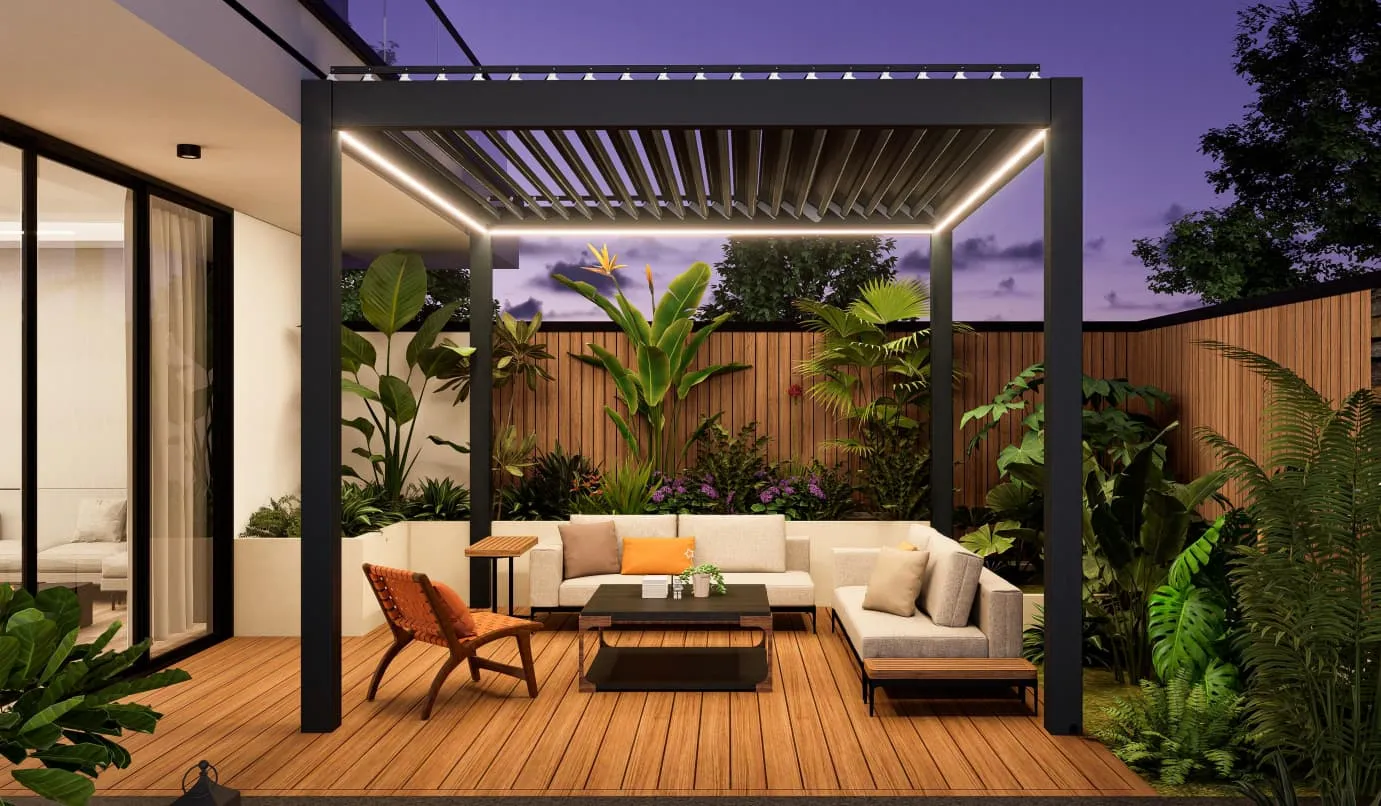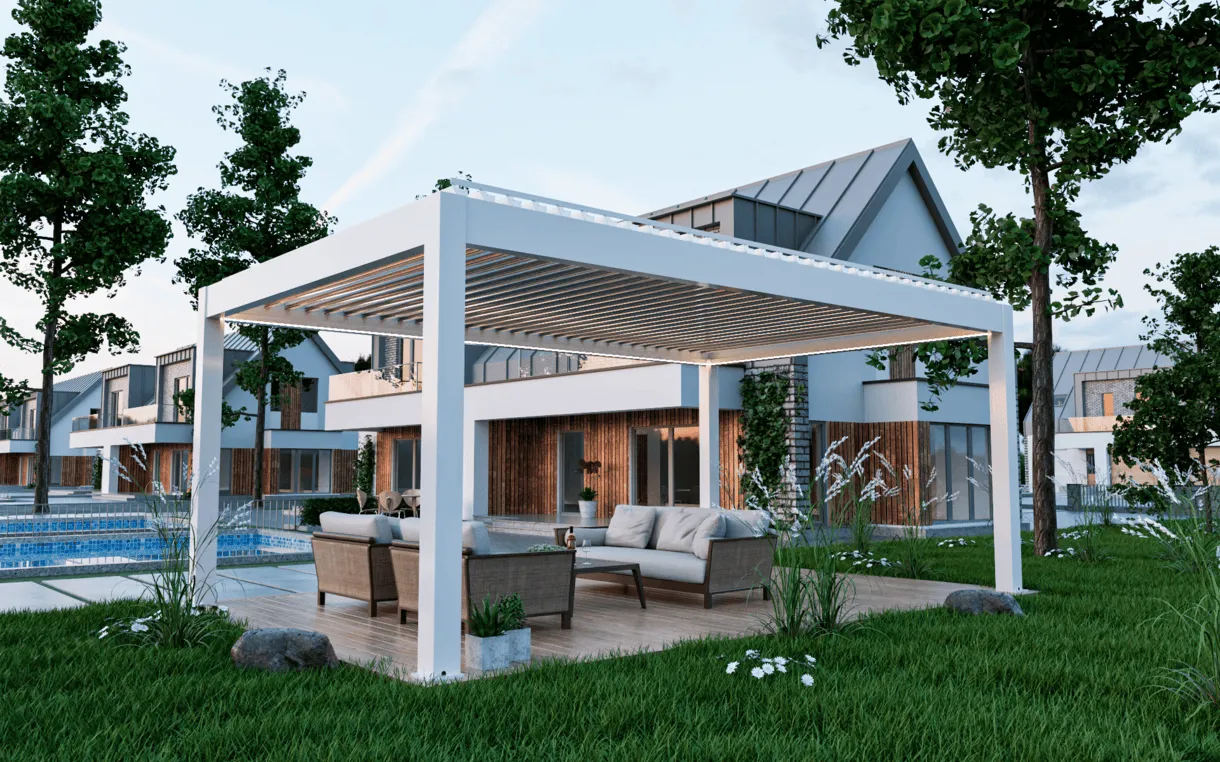Creating the Perfect Backyard Oasis with a Home Pergola
Designing an outdoor space that reflects personal style and meets functional needs is a goal many homeowners share. Among various backyard enhancements, the home pergola stands out as an elegant and practical addition. A well-chosen home pergola can enhance the aesthetic appeal of the backyard, provide comfortable shaded areas, and increase the usability of outdoor spaces throughout the year.
Choosing the best home pergola requires careful consideration of style, materials, size, and how it complements the existing landscape. This article guides readers through the process of selecting the ideal home pergola tailored to different backyard styles, ensuring the structure enriches both form and function.
Understanding Different Backyard Styles
Traditional Backyard Style
Backyards designed with a traditional style often feature classic landscaping, symmetrical layouts, and timeless materials such as brick or stone. When integrating a home pergola into a traditional backyard, the choice of materials and design elements should reflect elegance and refinement.
Wooden home pergolas with detailed craftsmanship and natural finishes blend seamlessly with traditional gardens. The natural texture of wood complements formal planting beds and vintage garden furniture, enhancing the overall atmosphere. The warmth and timeless appeal of a wooden home pergola create a welcoming focal point that elevates the outdoor setting.
Traditional backyard styles often incorporate lush greenery, and a home pergola can act as a perfect support for climbing plants like wisteria or roses. This integration of nature and structure adds charm and enhances privacy, making the backyard a tranquil retreat.
Modern and Minimalist Backyard Style
In contrast, modern backyard styles emphasize clean lines, simplicity, and the use of contemporary materials like metal and concrete. A home pergola designed for this style often features sleek profiles and minimalist details.
Metal or aluminum home pergolas with powder-coated finishes offer durability and a streamlined appearance. Incorporating glass or fabric canopies adds a modern touch while maintaining the open and airy feel that defines minimalist outdoor spaces.
Modern backyard designs tend to focus on functional, uncluttered spaces. The home pergola fits into this aesthetic by providing shelter without overwhelming the visual flow of the yard. Some modern pergolas come with smart features such as automated adjustable louvers for light control, aligning with the tech-savvy homeowner’s lifestyle.

Material Choices for Home Pergolas
Wood Pergolas
Wood remains the most popular material for home pergolas due to its natural beauty and versatility. Different wood types, such as cedar, redwood, or pressure-treated pine, offer varying levels of durability and resistance to weather and pests.
Wood pergolas can be stained or painted to match existing outdoor elements. However, wood requires regular maintenance, including sealing and protection against moisture, to preserve its appearance and structural integrity over time.
The choice of wood species impacts not only aesthetics but also longevity. Cedar and redwood, for example, contain natural oils that repel insects and resist decay better than other woods, making them excellent options for outdoor structures. Additionally, wood allows for custom carvings and details that enhance the home pergola's visual interest.
Vinyl and Metal Pergolas
Vinyl and metal pergolas are low-maintenance alternatives that offer long-lasting performance. Vinyl pergolas resist cracking, fading, and insect damage, making them ideal for homeowners seeking a worry-free solution.
Metal pergolas, especially aluminum or steel, provide strength and can support larger spans without bulky posts. Their modern aesthetic suits contemporary backyard designs and can be customized with finishes and accessories to enhance functionality.
Vinyl pergolas often come pre-finished, meaning they do not require painting or staining, which saves time and effort. Metal pergolas, on the other hand, can withstand harsher weather conditions and are often treated with powder coatings to prevent rust and corrosion.
Both materials offer longevity, with metal pergolas being particularly suited for large, open spaces requiring durable structures. Vinyl is a perfect fit for homeowners prioritizing ease of care and affordability without sacrificing style.
Size and Placement Considerations for Home Pergolas
Determining the Appropriate Size
Selecting the correct size for a home pergola depends on the intended use and available space in the backyard. Consider whether the pergola will cover a dining area, lounge space, or serve as a decorative focal point.
A pergola that is too small may feel cramped and limit usability, while an oversized structure can overwhelm the backyard and reduce open space. Measuring the area and visualizing how furniture and movement will fit beneath the pergola helps make an informed size choice.
For larger gatherings, a spacious home pergola accommodates seating and dining furniture comfortably, while smaller pergolas work well for intimate retreats or garden focal points. Also, the size impacts the pergola’s visual balance within the yard and its relationship to the home.
Optimal Placement in the Backyard
Placement plays a vital role in maximizing the benefits of a home pergola. Positioning the pergola near the house can create a smooth transition between indoor and outdoor living areas.
Alternatively, placing the pergola in a garden nook or overlooking a scenic view enhances privacy and creates a retreat-like atmosphere. Sun orientation should also be considered to maximize shade during peak sunlight hours.
Additionally, consider the natural flow of foot traffic and proximity to utilities if you plan to add lighting or outdoor kitchens under the pergola. Avoiding areas prone to flooding or poor drainage will preserve the structure’s foundation and longevity.
Design Features to Enhance Functionality
Roofing Options and Shade Control
While traditional pergolas have open lattice roofs, modern designs offer roofing options that increase comfort and usability. Retractable canopies, adjustable louvers, or polycarbonate panels allow homeowners to control sunlight and protect against rain.
These features extend the usability of a home pergola beyond fair weather, making outdoor living enjoyable in diverse conditions.
Adjustable roofing systems can be motorized for convenience, offering complete control over light and ventilation with the push of a button. Polycarbonate panels provide clear protection against UV rays and precipitation while preserving natural light, ideal for regions with unpredictable weather.
Integration of Lighting and Accessories
Adding lighting to a home pergola enhances ambiance and allows for evening use. Options include string lights, built-in LED fixtures, or solar-powered lanterns.
Incorporating ceiling fans or heaters can improve comfort, especially in regions with warm summers or chilly nights. Thoughtful accessory integration transforms the pergola into a fully functional outdoor room.
Some home pergolas include power outlets and wiring hidden within posts for easy installation of audio systems, kitchen appliances, or decorative elements. This integration offers homeowners flexibility and elevates the outdoor experience.
Maintenance Tips for Longevity
Routine Cleaning and Inspections
Maintaining a home pergola involves regular cleaning to prevent dirt buildup and mildew growth. Wooden pergolas benefit from power washing and resealing every few years.
Routine inspections ensure fasteners remain tight, and structural elements show no signs of damage. Prompt repairs help avoid costly replacements and keep the pergola safe for use.
Keeping leaves and debris clear of the roof area helps avoid moisture retention, which can accelerate material degradation. For wood, applying fresh stain or sealant every two to three years preserves color and structural strength.
Weather Protection and Seasonal Care
Applying protective finishes to wood pergolas guards against moisture and UV damage. In areas with harsh winters, covering or temporarily dismantling accessories can prevent weather-related wear.
For vinyl and metal pergolas, checking for corrosion or discoloration and cleaning gutters or drainage features ensures durability and appearance.
Seasonal care includes checking for ice buildup or snow loads that might stress the pergola, especially for structures without solid roofs. Removing heavy snow promptly prevents sagging or damage.
Enhancing the Value of Your Home with a Pergola
Increasing Curb Appeal
A thoughtfully designed home pergola can significantly boost your property’s curb appeal. Its visual presence creates a sense of sophistication and intentional design that attracts potential buyers.
Adding a pergola shows investment in outdoor living, a highly valued feature in today’s real estate market. It suggests that the home offers functional, comfortable spaces beyond the interior walls.
Boosting Outdoor Living Space Usability
By extending usable space outdoors, a home pergola increases the overall living area of the home. This additional space can be used for family gatherings, parties, or quiet relaxation, enhancing daily life.
Incorporating comfortable seating, lighting, and climate control options makes the pergola a year-round retreat, further adding to the home’s desirability.
Frequently Asked Questions
How do I choose the best material for my home pergola?
Consider factors like climate, maintenance preferences, and style. Wood offers natural beauty but requires upkeep; vinyl and metal provide low maintenance and modern looks.
Can a home pergola be customized to fit my backyard’s unique layout?
Yes, home pergolas can be designed with custom dimensions, shapes, and accessories to perfectly suit your backyard’s size and style.
What is the typical lifespan of a home pergola?
With proper maintenance, wood pergolas can last 15-25 years, while vinyl and metal pergolas often last 25-40 years or more.
Are home pergolas suitable for all weather conditions?
Modern home pergolas with adjustable roofing and durable materials can be used in a variety of climates, offering protection from sun, rain, and wind.
Table of Contents
- Creating the Perfect Backyard Oasis with a Home Pergola
- Understanding Different Backyard Styles
- Material Choices for Home Pergolas
- Size and Placement Considerations for Home Pergolas
- Design Features to Enhance Functionality
- Maintenance Tips for Longevity
- Enhancing the Value of Your Home with a Pergola
- Frequently Asked Questions



